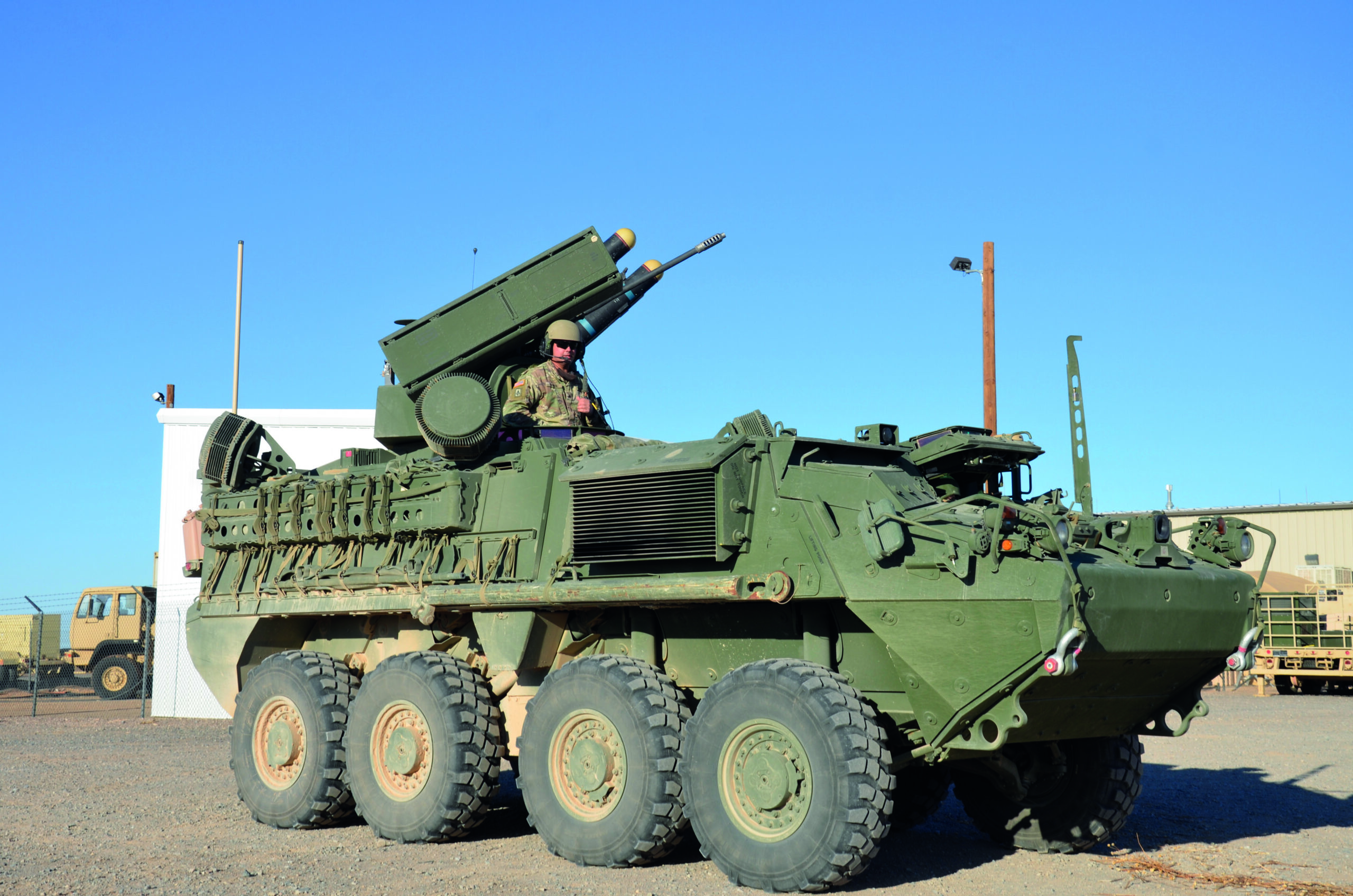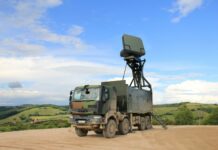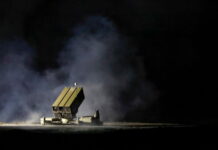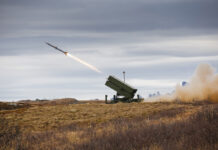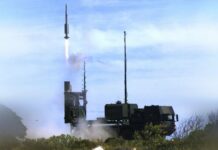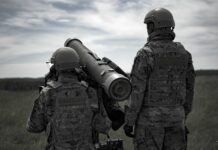Short-Range Air Defence (SHORAD) has seen a resurgence of interest since conflicts such as those in Ukraine and Nagorno-Karabakh. What is the situation nowadays in an era of drone threat and the development of directed weapons?
SHORAD continues to be provided by short and very short-range missiles, automatic guns, and directed-energy weapons. Protection can be mobile or by successive static deployments of short duration. Western countries have missiles inherited from Cold War programmes which continue to be improved in terms of range and seeker sensitivity while Russia and China have developed accurate weaponry over the last twenty years.
SHORAD Overview in Western Countries
The United States still markets the FIM-92 STINGER, whose production, launched in 1978, has now exceeded 70,000 units. It is manufactured by Raytheon Missile Systems and licensed by EADS and ROKETSAN. In 2019, the US military modernised its missiles with proximity fuzes, destroying drones on impact or detonating near them. The artillerymen now use the STINGER-Reprogrammable Microprocessor (RMP). The Enhanced Target Acquisition Kit (ETAK) facilitates the acquisition and monitoring of targets day and night, even in degraded conditions. On 10 November 2020, the US Army issued a Request For Information (RFI) for its replacement and a contract should be awarded by 2026 for 8,000 missiles.
Since its incorporation into MBDA, Matra has been producing the MISTRAL missile since the end of the eighties. This weapon system was the first to use a tripod. The latest version, designated MISTRAL 3, is more efficient, less sensitive to counter-measures, and benefits from a longer operational life. In November 2019, this missile intercepted a tiny target of the MIRACH 40 type, more than 7 km away. It is currently in service with the French Armed Forces, with Serbia the latest of 32 countries to have purchased the MISTRAL since its commercialisation.
Swedish Solutions
In Sweden, Saab has been producing the RBS70 missile since the seventies. It is often associated with the GIRAFFE radar, which has undergone a remarkable technological evolution. The RBS 70 NG possesses laser guidance that is theoretically immune to interference, unlike its competitors. The BOLIDE missile is the most advanced version with a maximum speed of Mach 2 and an effective range of up to 9,000 m. 19 countries have purchased more than 1,600 RBS 70 and RBS 70 NG firing units and more than 18,000 missiles.
Sweden has recently developed the RBS 98. The system consists of IRIS-T missiles from Diehl Defence in its SLM/SLS (surface launch medium-range / surface launch SHORAD) version. The Norwegian military has decided to use the same missile, reusing part of the Norwegian Advanced Surface to Air Missile System (NASAMS) C2 system to create a mobile short-range air defence system. The project includes six modified armoured combat support vehicles (ACSV) carrying IRIS-T missiles.
Man and Vehicle Mounted Systems
The British are using the STARSTREAK High Velocity Missile (HVM), manufactured by Thales Air Defence with a range of over 7 km. An order of £98.4M has been placed to equip the British Army and the Royal Marines. The UK has also recently commissioned the Lightweight Multi-Role Missile (LMM). This ammunition uses a laser beam with terminal infrared guidance and a laser proximity sensor. Members of 30 Commando (Royal Marines) have tested the LMM in ground-to-air mode against a Meggitt BANSHEE target drone.
There are ultimately only a few missiles, which operate with a multitude of platforms, radars, and associated command systems.
Faced with the resurgence of significant threats, the US Army has decided to rebuild a substantial SHORAD capability. The STRYKER A1 IM-SHORAD is a new system produced by General Dynamics and Leonardo DRS, consisting of a complete weapons system on a combat-proven high mobility vehicle. The armoured car has a 30 mm automatic cannon and missile launchers capable of firing STINGER and HELLFIRE missiles. The multi-mission hemispheric radar (MHR) provides 360-degree aerial surveillance.
In April 2021, the US Army deployed the first batch to Germany where the 5th Battalion, 4th Air Defense Artillery Regiment will receive a total of 40 STRYKER IM-SHORAD units. The US Army also ordered 144 STRYKERs, a part of which will undoubtedly be deployed in the Pacific theatre. The German and Dutch military use the FENNEK-SWP (STINGER Weapon Platform), but in reduced numbers. Sweden recently developed the RBS-98 mounted on the BVS10 tracked vehicle for potential operations near the Arctic Circle. The Mistral ATLAS RC comprises a remote-controlled turret, two missiles, and the latest-generation thermal sight. It can be mounted on light tactical vehicles such as the URO VAMTAC ST5 or the NIMR AJBAN 440.
Russian Equipment
Russia’s defence industry has continued to develop its SHORAD capability during a period when Western Armed Forces lost most of their skills in this field. First, we find the PANTSIR-S1 system (NATO code SA-22 GREYHOUND). This system has been rapidly improved with an S2 version with more efficient radar. Russian forces operate more than 140 PANTSIR S1 and S2 systems.
This system has achieved export success with more than ten customers, including Burma, which ordered the PANTSIR-S1 early in 2021. Contracts are reportedly underway with new countries in the Middle East and the Asia Pacific region. This equipment has had relative success in Syria and Libya because of the inability to locate the weaponised drones effectively. Eight PANTSIR systems were destroyed in Syria and 15 (supplied by the UAE) in Libya. A modernised version, the PANTSIR SM, was presented in February 2019. The vehicle uses a KAMAZ 53958 chassis (with armoured cabin) and received a rotating AESA radar with an increased engagement range of 40 km. The PANTSIR can also be mounted on the DT30PM tractor for the Arctic version but is not equipped with a gun in this case.
Different Theatre Deployments
The TOR M1/2 is a high-performance, high-mobility anti-aircraft system in service in 15 countries, with Russia also operating more than 200 units. This system was very effective against drones in Syria as a complement to the PANTSIR S1. The Tor-M2DT was developed for operations in the far north. The 9M337 SOSNA-R will replace the obsolete STRELA-10 systems. Without a gun, it uses 12 9M340 supersonic missiles guided by a laser beam, thus making it highly effective against fast, manoeuvring targets.
In the very short-range domain, Russia produced the STRELA missile and later the IGLA. Among the latest versions are the 9K310 IGLA-1 (or SA-16 GIMLET), the 9K38 (SA-18 GROUSE), with the latest generation being the 9K338 IGLA-S (SA-24 GRINCH). The IGLA-S has a range of 6 km with an intercept altitude up to 4.5 km. Since 2014, it has been replaced by the 9K333 VERBA missile (SA-25 WILLOW), the 4th generation of Russian MANPADS. Unveiled at the Russia Army 2015 exhibition, the country deployed this missile system in the Syrian theatre. It can be fitted with Augmented Reality to facilitate target acquisition. Russia plans to mount VERBA / IGLA-S missiles on the URAN 9 uncrewed combat ground vehicle (UCGV).
Chinese Offer
The People’s Republic of China (PRC) has long copied Soviet and Western equipment such as the CROTALE or APSIDE missiles. Among the many pieces of equipment in service produced for export, we can first mention the HQ-17. This is a ground-based missile system, which originated from the reverse-engineering of the Russian TOR-M1 (SA-15 GAUNTLET), acquired in limited quantities. It is one of the most capable SHORAD systems of the People’s Liberation Army (PLA). The HQ-17AE, which is the latest model, can theoretically fire while moving, providing defence for highly mobile units. One of the latest evolutions of the HQ-17 is the FL-2000 unveiled at the 2018 Zhuhai Air Show.
Derived from the HQ-7 (French CROTALE), the FM-90 can engage targets at ranges up to 15 km. It is mounted on a 6×6 light armoured personnel carrier. Bangladesh has acquired four of these systems.
Homegrown Solutions
In the MANPADS field, Chinese activity is diverse and challenging to follow due to confusing terminology. The PRC has long produced the HONGYING missile, which is still in service in several countries. The FN/FY-6/16 family’s latest development remains among the most advanced Chinese missiles available for export. They use multispectral IR / ultraviolet sensors and advanced countermeasures. In August 2021, Pakistan ordered 140 more FN-16 missiles even though the local press pointed to problems with the reliability of Chinese systems. The HN-6 is a further development of FN-6 and FN-16.
In the early 1990s, Chinese industry unveiled the QW-1 VANGUARD, a new generation of missiles. Several models were successively developed and produced. The QW-2 VANGUARD 2 entered service in the early 2000s, and the QW-12 can be considered the equivalent of the Russian IGLA-S. The QW-19 was first shown at Air Show China 2014. The QW-4 has been in service with the PLA since 2007, but only limited information is available. Many countries have acquired these missiles, including Turkmenistan and Bangladesh, which have received the QW-2. Chinese manufacturers have installed their missiles on many vehicles, such as the DONGFENG EQ2050 or the TD-2000 system.
Revival of Self-Propelled Anti-Aircraft Weapons (SPAAG)
The development of self-propelled guns, which has been at a standstill for a long period of time, could restart due to increasing threats of all types. We can cite tactical drones, loitering ammunition and of course, all types of aircraft. European armies no longer have SPAAG except for a few Romanian GUEPARD or MARKSMAN systems.
Among the most promising projects is the adaptation of the 40 mm CTA gun to a 6×6 truck that gave birth to the RAPIDFIRE, although it has not found a buyer yet. Rheinmetall offers the BOXER SPAAG fitted with the Oerlikon SKYRANGER air defence turret. It is armed with Rheinmetall’s 35 mm x 228 calibre gun, with Advanced Hit Efficiency And Destruction (AHEAD) ammunition, optimised for air defence. The gun has a cyclic rate of fire of 1,000 rounds a minute, with a typical aerial target burst of 20 to 24 rounds.
China recently revealed a new type of self-propelled, eight-wheeled 35-mm anti-aircraft gun equipped with two surface-to-air missiles. South Korea’s industry developed and will mass-produce a newly developed 30 mm (SPAAG) system based on the chassis of the Hyundai ROTEM K808 8×8 armoured vehicles. Higher calibres may be used in the future. Russia also equipped one of its BMP3 tanks with a 57 mm AU-220M gun designed for the dual role of air defence and ground combat.
New Technologies and New Players
In Turkey, Roketsan and Aselsan have developed a short, medium and long-range surface-to-air missile family since 2007. On 26 March 2021, the HISAR-A + destroyed a target drone during a test firing. A first HİSAR A + system was delivered to the Turkish Armed Forces in August 2021.
Poland has long produced the GROM missile, a local version of the 9K38 IGLA. The PIORUN missile is an improvement of the GROM with a range exceeding 6 km. Poland is also producing the POPRAD anti-aircraft system mounted on the SPZR developed by PIT-RADWARE. A total of 77 POPRAD firing units were delivered between 2018 and 2021 to the Polish Armed Forces.
Serbia has the nationally designed PASARS system, which incorporates a 40 mm gun and surface-to-air missile. The previous two versions of the PASARS were first equipped with the Russian IGLA and later the MBDA-developed MISTRAL 3 missiles. The latter, called RLN-IC, incorporates a modified Soviet infrared-guided air-to-air missile VYMPEL K-13 (R-13M).
South Korea has developed the SHIN-KUNG (CHIRON) missile, similar to the MISTRAL missile and it could have a superior performance.
The rocket features integrated IFF systems, night, and adverse weather capabilities, a two-colour (IR/UV) infrared seeker to aid in negating infrared countermeasures (IRCM). During development tests, the missile scored a 90 per cent hit ratio. The SHIN-KUNG missile hit a low-flying target up to 3.5 km with a speed of 697.5 m/s (over Mach 2.36) and a range of 7 km.
The Drone Threat
The mass arrival of drones of all sizes, loitering ammunition and directed weapons will influence future systems accompanying manoeuvre forces. There have been numerous announcements but few achievements so far. The US is finalising the development of laser-type weapons for short-range surface-to-air defence. A team of army engineers from The Army Rapid Capabilities and Critical Technologies Office (RCCTO) is developing two combat lasers, classes of 50 kilowatt-class weapons to be attached to STRYKER vehicles for combat deployment by 2022. The battery, power and cooling system are all self-contained in the (Directed Energy) DE M-SHORAD system. The Army recently tested such systems at Fort Sill, Oklahoma.
To conclude, SHORAD is currently experiencing renewed interest in western countries while Russia and China have understood the importance of maintaining significant resources in this area. The fifth generation of MANPADS is due to arrive soon, at the same time as the first directed weapons. It is clear that ground-to-air defence is multi-layered by nature with a mix of different systems and weapons. Warfare is also a way forward with the full spectrum of measures to cut the links between a drone and its operator.


